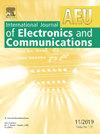HAPS辅助天空地一体化网络协同卸载
IF 3.2
3区 计算机科学
Q2 ENGINEERING, ELECTRICAL & ELECTRONIC
Aeu-International Journal of Electronics and Communications
Pub Date : 2025-08-06
DOI:10.1016/j.aeue.2025.155960
引用次数: 0
摘要
移动边缘计算(MEC)显著增强了网络边缘的计算能力,使计算密集型应用成为可能。然而,在没有可靠地面网络基础设施的地区,如农村地区或受灾地区,传统的MEC实施面临重大挑战。为了解决这一问题,我们提出了一种新的基于mec的空间-空气-地面综合网络(SAGIN)框架,该框架结合了高空平台站(HAPS)和低地球轨道(LEO)卫星,以确保在缺乏地面基础设施的地区全面覆盖并减少地面用户(GUs)的执行延迟。通过利用HAPS(提供广域覆盖和可靠连接)和LEO卫星(提供高吞吐量通信)的互补能力,提出的SAGIN框架增强了计算卸载。我们提出了一种通过HAPS在GUs和LEO卫星之间进行合作的方法,以最大限度地卸载数据,同时满足部分卸载模式下严格的延迟约束。通过联合优化HAPS和LEO卫星之间的任务卸载决策和资源分配,提出了在增加卸载数据的同时最小化执行延迟的非线性优化问题。仿真结果表明,所提出的协作卸载方案明显优于考虑执行延迟的随机和非协作卸载方案。这些结果突出表明,所提出的协作式、haps辅助SAGIN框架有效地实现了基础设施有限区域的低延迟边缘计算。本文章由计算机程序翻译,如有差异,请以英文原文为准。

HAPS assisted cooperative offloading for space–air–ground integrated networks
Mobile edge computing (MEC) has significantly enhanced computational capabilities at the network edge, enabling computation-intensive applications. However, traditional MEC implementations face significant challenges in areas without reliable terrestrial network infrastructure, such as rural regions or disaster-affected zones. To address this, we present a novel MEC-enabled space–air–ground integrated network (SAGIN) framework that combines high-altitude platform station (HAPS) and low Earth orbit (LEO) satellite to ensure comprehensive coverage and reduce execution delays for ground users (GUs) in areas lacking terrestrial infrastructure. By leveraging the complementary capabilities of HAPS, which provide wide-area coverage and reliable connectivity, and LEO satellites, which offer high-throughput communication, the proposed SAGIN framework enhances computation offloading. We propose a cooperative approach between GUs and the LEO satellite via the HAPS to maximize offloaded data while satisfying stringent delay constraints under a partial offloading mode. A nonlinear optimization problem is formulated to minimize execution delay while increasing offloaded data by jointly optimizing task offloading decisions and resource allocation between the HAPS and LEO satellite. Simulation results show that the proposed cooperative offloading scheme significantly outperforms random and non-cooperative schemes considering execution delay. These results highlight that the proposed cooperative, HAPS-assisted SAGIN framework effectively enables low-delay edge computing in infrastructure-limited regions.
求助全文
通过发布文献求助,成功后即可免费获取论文全文。
去求助
来源期刊
CiteScore
6.90
自引率
18.80%
发文量
292
审稿时长
4.9 months
期刊介绍:
AEÜ is an international scientific journal which publishes both original works and invited tutorials. The journal''s scope covers all aspects of theory and design of circuits, systems and devices for electronics, signal processing, and communication, including:
signal and system theory, digital signal processing
network theory and circuit design
information theory, communication theory and techniques, modulation, source and channel coding
switching theory and techniques, communication protocols
optical communications
microwave theory and techniques, radar, sonar
antennas, wave propagation
AEÜ publishes full papers and letters with very short turn around time but a high standard review process. Review cycles are typically finished within twelve weeks by application of modern electronic communication facilities.

 求助内容:
求助内容: 应助结果提醒方式:
应助结果提醒方式:


